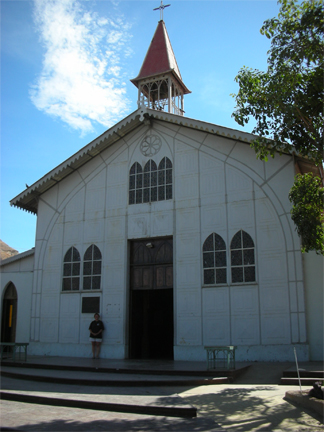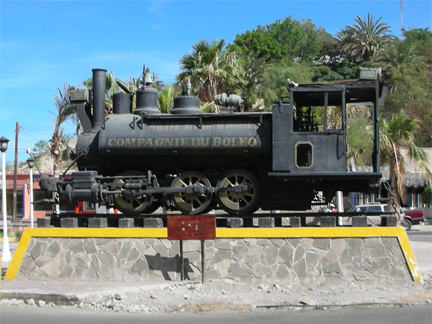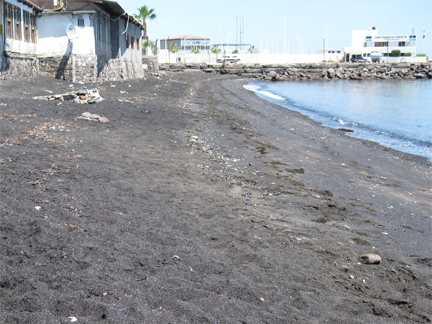 |  |
Article and photos by David Kier

While Baja California is a region of Mexico, one town in Baja started out as a little piece of France. The story begins in 1868 when some very rich copper ore was discovered by José Rosas Villavicencio. The Villavicencio family has been in central Baja since 1732 when one enlisted as a Spanish soldier to protect the missions. José found the ore as blue- green spheres (boleos) and he had a ship captain take them across the gulf to Guaymas to be analyzed. Two German men paid José 16 pesos for the location of the copper and small scale prospecting began. The discovery was eventually seen by a French geologist from the House of Rothschild which purchased all the smaller mine claims in 1885.
The Boleo Mining Company was formed and constructed a network of roads, ranches, farms and water lines to supply the needs of the mine and miners. One thing over-looked was a church for the new town.
Alexander Gustave Eiffel (of Eiffel Tower fame) had designed a pre-fabricated metal church in 1884 as a prototype for missionary churches in France's tropical colonies. Built in 1887 to be strong enough to withstand severe tropical weather, the church is made from galvanized iron. In 1889 the church and the Eiffel Tower were put on display at the Paris World's Exposition. Gustave won first prize for the church's design.
Years later, an official for the French Boleo Mining Company learned of the church being stored in a Brussels warehouse. He purchased it and had the church shipped to Santa Rosalía where it was reassembled in 1897. It was given the name 'Iglesia de Santa Bárbara'.

The copper deposits thinned in the 1920's, but failing to sell their operation El Boleo continued mining until 1953. A Mexican company continued to work the mine and new activity from a Canadian company has promised a re-birth to the copper and also manganese mining. The Eiffel church, and many of Santa Rosalia's buildings and original hotels remain today along with some of the mine's hardware and a railroad engine. More history of the Santa Rosalia mine and town can be found in the San Diego History Center website.
With the completion of the Trans-peninsular Highway in 1973, and ferry service across the gulf to Guaymas, Santa Roaslía has blossomed into a tourist and service center for central Baja. Once called the ugliest town in Baja, the dusty, and sooty mine town has transformed. Santa Rosalia is now an attractive and interesting town. The town's black sand beach is most interesting. The Eiffel designed church remains one of Santa Rosalía's biggest tourist attractions.
Getting There
As you drive through Santa Rosalia, the church is easily accessed from Highway 1. As you pass the Santa Rosalia harbor you will come to a roundabout directly across from the boat ramp. Head west on Alvaro Obregón street for two blocks and the church will be on your right. GPS coordinates are approximately 27 20'13.57"N and 112 16'6.83"W. If all of the sightseeing has stirred up an appetite, one block further west of the church you will find the Panaderia El Boleo, which claims to be the most famous bakery in the world!



Very easy process to purchase online. Very reasonable rates. Lots of good insight and helpful...

If you are going to Mexico Baja Bound is excellent. Buy online, good price, good quality. Fast and...

Easy to buy! I didn’t have to use it, so no clue on that front